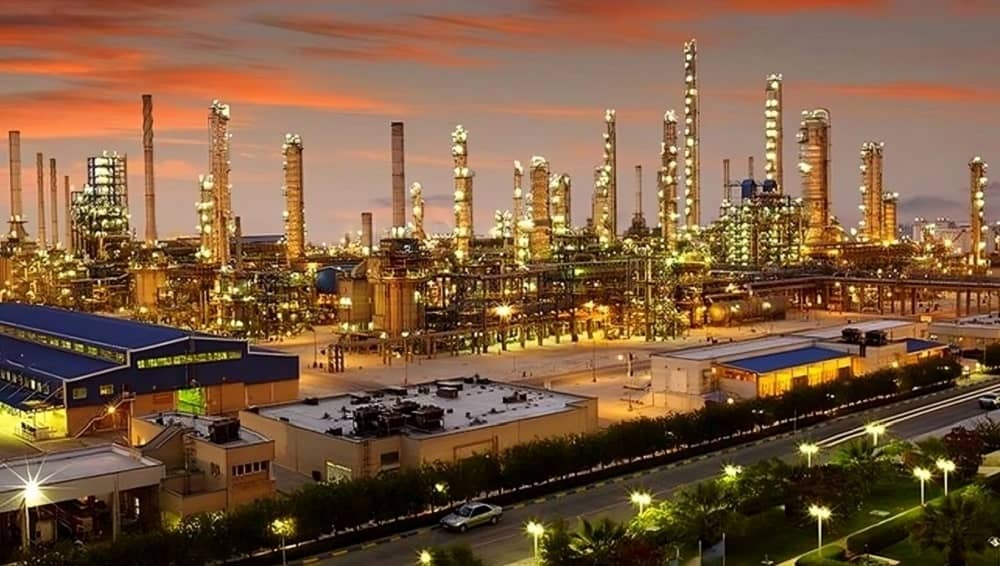The Strategic Importance of the Strait of Hormuz
The Strait of Hormuz is arguably the most critical maritime chokepoint in the global energy supply chain. Situated between Iran and Oman, this narrow waterway connects the Persian Gulf to the Arabian Sea and is the only sea passage from the oil-rich Gulf countries to the open ocean. According to the U.S. Energy Information Administration (EIA), roughly 20–30% of the world’s seaborne crude oil and about 25% of global liquefied natural gas (LNG) transits through this strait daily, making it a linchpin of global trade (EIA, 2023).
A hypothetical blockade of the Strait of Hormuz, whether due to geopolitical tensions, conflict, or deliberate military action, would not only halt crude oil flows but also cripple petrochemical and refinery exports from major Gulf producers such as Saudi Arabia, the United Arab Emirates (UAE), Qatar, Kuwait, Iraq, and Iran. The resulting shock would ripple through global markets and industries, causing disruption on a scale comparable to or worse than the 1973 oil crisis or the 2022 energy price spikes triggered by the Russia–Ukraine war.

Persian Gulf Petrochemical Industries Company (PGPIC) in Iran, image credit: energypress.ir
–
1. Global Oil and Gas Supply Shock
Crude Oil Exports Cut Off
At peak flows, the Strait of Hormuz facilitates the transit of over 17 million barrels of oil per day, equivalent to nearly one-fifth of the global oil consumption (IEA, 2022). The countries most reliant on these exports include:
-
Asia-Pacific economies like India, Japan, South Korea, and China.
-
European Union states with limited domestic oil production.
-
Emerging economies with high growth and energy needs.
If all oil tankers are blocked from transiting, Brent crude prices could skyrocket past $150 per barrel, according to past estimates by Goldman Sachs and Oxford Energy Studies (Oxford Institute for Energy Studies, 2020).
Liquefied Natural Gas (LNG) Supply Disruption
Qatar, the world’s second-largest LNG exporter (after the U.S. in 2024), relies entirely on the Strait for LNG shipments. Disruption would immediately:
-
Severely impact European LNG imports, especially after the EU’s 2022 pivot away from Russian gas.
-
Cut off gas supplies to India, Pakistan, Bangladesh, and China, causing blackouts and industrial shutdowns.
-
Trigger a global bidding war for available LNG, worsening energy poverty in the Global South.
–
2. Economic Fallout: Inflation and Recession Risks
Fuel Shortages and Price Surges
A sudden drop in oil and gas availability would ignite a global inflationary wave, with developing economies bearing the brunt:
-
India imports over 80% of its oil, with a significant share from the Persian Gulf. Fuel subsidies would collapse under pressure.
-
Sub-Saharan African nations, already facing debt stress, would struggle to import diesel and petrol for transport and agriculture.
-
Global transport and logistics costs would increase due to higher bunker fuel prices, impacting food prices and consumer goods.
Industrial Slowdown and Recession
High energy costs lead to input cost inflation in critical sectors:
-
Aviation and shipping industries would slash operations or increase fares/freight rates.
-
Heavy industries (steel, cement, aluminum) and automotive manufacturers reliant on refined fuels and petrochemical feedstocks would slow production.
-
Consumer confidence would decline, increasing the risk of a global recession—similar to 2008 but triggered by energy insecurity rather than financial collapse.
–
3. Petrochemical Supply Chain Disruption
The Gulf is a major petrochemical hub, producing large volumes of essential industrial materials:
-
Saudi Aramco and SABIC produce ethylene, methanol, polyethylene, and propylene.
-
Qatar is a global leader in urea and ammonia, key fertilizers for global agriculture.
-
UAE and Kuwait export significant volumes of refined fuels, lubricants, base oils, and plastics.
Consequences of Export Freeze:
-
Pharmaceuticals and medical devices—dependent on petrochemical feedstocks—would face manufacturing delays.
-
Fertilizer shortages would jeopardize crop yields across South Asia, Africa, and Latin America.
-
Electronics and packaging industries in Europe and China would experience bottlenecks due to lack of raw materials.
The World Bank estimates that even a 15–20% disruption in petrochemical feedstocks can shave off 1–2% of global manufacturing output annually (World Bank, 2022).
–
4. Geopolitical and Military Ramifications
A blockade would not be merely an economic issue but a full-blown geopolitical flashpoint. The Strait of Hormuz has been a recurring theater of tension, especially between Iran and the United States, with past incidents in 1984–1988 (the Tanker War) and 2019 drone attacks.
Potential Military Responses:
-
The U.S. Navy’s Fifth Fleet, based in Bahrain, would likely mobilize to secure shipping lanes, however, the success is not gauranteed.
-
Coalition task forces (e.g., Operation Sentinel) could escalate maritime patrols and deploy minesweeping operations.
-
Iran might retaliate with missile strikes, cyberattacks, or proxy operations against Gulf oil infrastructure or Western allies.
Regional Destabilization
-
Political instability in Iraq, Yemen, Lebanon, or Bahrain could worsen due to shifting alliances and power vacuums.
-
OPEC unity would be tested, as Gulf monarchies might clash over pipeline rerouting or strategic reserves.
–
5. Limited Alternatives and the Infrastructure Bottleneck
Existing Pipelines Can’t Fill the Gap
Some Gulf countries have tried to diversify away from Hormuz dependency:
-
Saudi Arabia’s Petroline (East-West pipeline) can move ~5 million barrels/day to the Red Sea.
-
UAE’s Habshan–Fujairah pipeline bypasses Hormuz and transports 1.5 million barrels/day.
However, these capacities are insufficient to replace the full volume of seaborne exports, and their inland terminals are vulnerable to attack (International Energy Forum, 2023).
Strategic Petroleum Reserves (SPRs)
The International Energy Agency (IEA) maintains coordinated emergency stocks, but these are:
-
Designed for short-term relief (90–120 days).
-
Unable to compensate for a months-long blockade of this scale.
-
Already depleted in some countries post-Ukraine war (IEA, 2023).
–
6. Financial Markets and Global Trade Impact
Market Volatility
-
Stock markets would experience immediate sell-offs, especially in transportation, chemicals, manufacturing, and airlines.
-
Safe haven assets like gold and the U.S. dollar would spike in demand.
-
Insurance premiums for shipping through the Middle East would surge by 300–500%, according to Lloyd’s of London estimates (Lloyd’s, 2023).
Supply Chain Disruptions
-
Major shipping lines like Maersk, Hapag-Lloyd, and MSC would reroute or delay Gulf transits.
-
Global ports (e.g., Singapore, Rotterdam, Shanghai) would see delays and congestion due to rerouted or cancelled cargo.
-
Container freight rates and delivery schedules would be thrown into disarray.
–
Conclusion: A High-Risk Scenario with Global Repercussions
A sustained blockade of the Strait of Hormuz is not just a regional crisis—it is a global emergency with far-reaching implications. From skyrocketing energy prices to fertilizer shortages, from industrial slowdowns to the threat of war, the impact would reach every continent and every economic sector.
The world’s dependence on Gulf petrochemicals and refined products remains a strategic vulnerability. Long-term resilience will depend on diversified supply chains, alternative energy development, international diplomacy, and collective maritime security.
References
-
U.S. Energy Information Administration. (2023). The Strait of Hormuz is the world’s most important oil chokepoint
-
International Energy Agency. (2022). Oil 2022 – Analysis
-
Oxford Institute for Energy Studies. (2020). Oil Market Scenarios
-
World Bank. (2022). Energy and Extractives
-
Lloyd’s of London. (2023). War Risk Shipping Premium Updates
-
International Energy Forum. (2023). Middle East Energy Security
-
IEA. (2023). Emergency Oil Stocks

